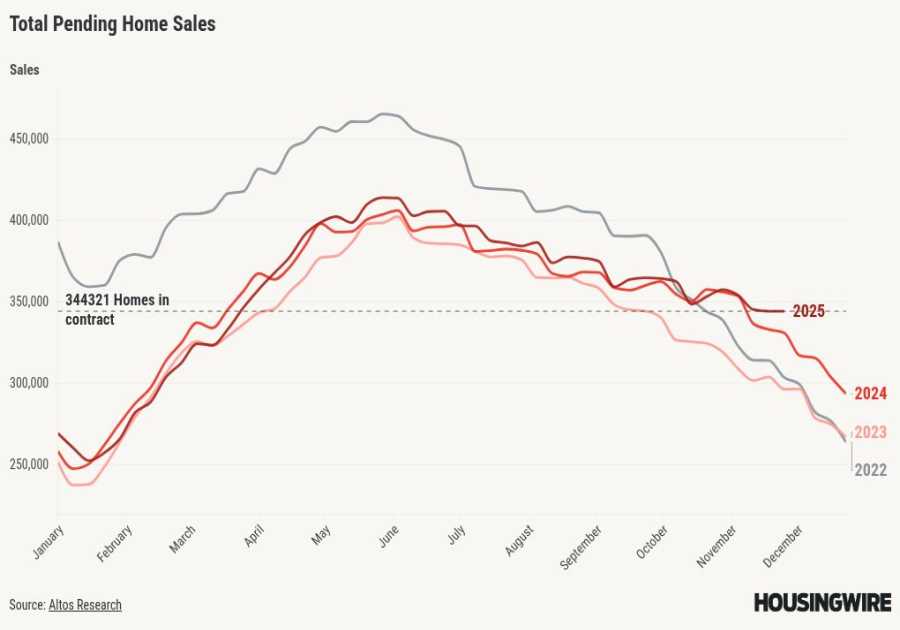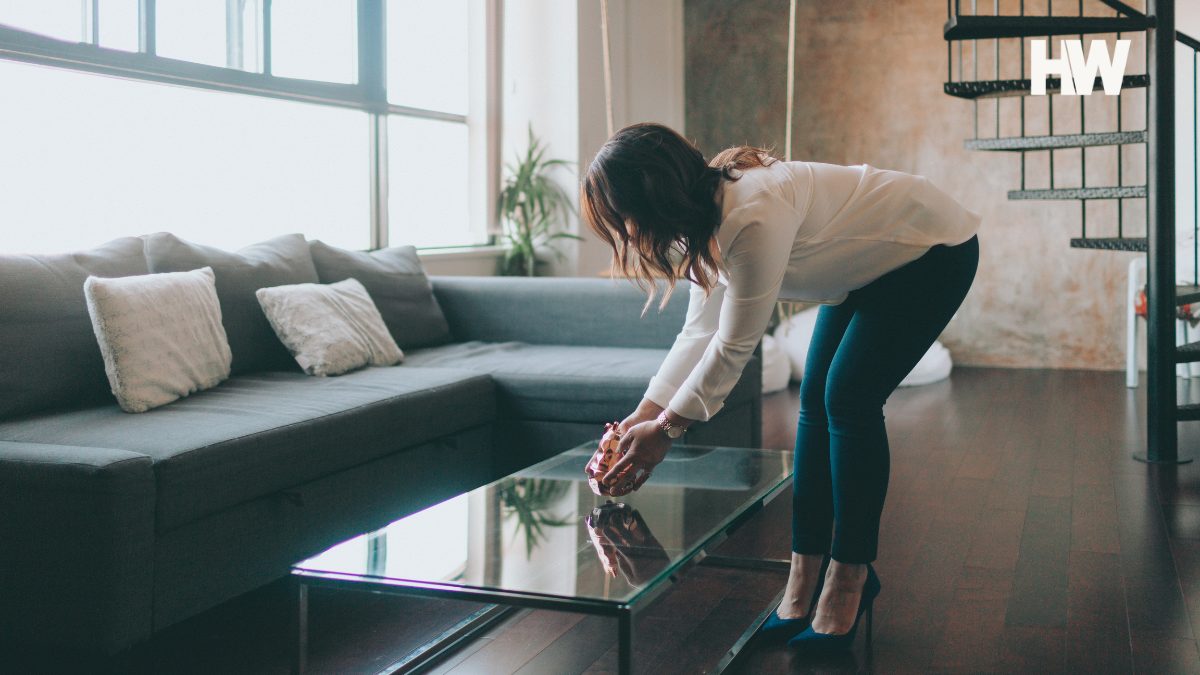
Every agent has taken at least one photo they wish they could erase from the MLS. Maybe the lighting was harsh, the toilet lid was up or your reflection made a surprise appearance in the bathroom mirror. Trust me, it happens. Bad real estate photos don’t just spark a laugh in your group chat, but they can make great listings look mediocre at best. Worse than that, bad listing photos can cost you clients, showings and offers.
We’re going to look at the worst real estate photo mistakes agents regret making and tell you how to fix them. You’ll see real examples of what not to do, learn how small tweaks can make a big impact and pick up practical photography tips to make every listing photo work harder for you.
20 bad real estate photos from real listings
Even the most beautiful home can look like a haunted house when it’s photographed poorly. A crooked angle, dim lighting or a stray pet in the background can make buyers scroll right past your listing. The following examples highlight common photo fails agents have seen – or even taken themselves – and the simple ways to fix them before they end up in a group chat titled “what not to do.”
1. Crooked shots
A tilted photo is like nails on a chalkboard for buyers. They see slanted floors and leaning doorframes and suddenly that solid house looks like it’s sliding downhill and starts setting off warning signals. It gives the impression of carelessness and poor maintenance. If your photos look careless, the buyers assume the seller might be too.
- Takeaway: Use your camera’s gridlines or a tripod to keep things straight. Perfectly level lines instantly make a space feel well cared for, calm and balanced.
2. Dark interiors
Every agent has been there. You walk into a beautiful home, snap a few quick shots only to later realize it looks like a cave. Poor lighting can hide the best features and make rooms feel smaller than they really are.
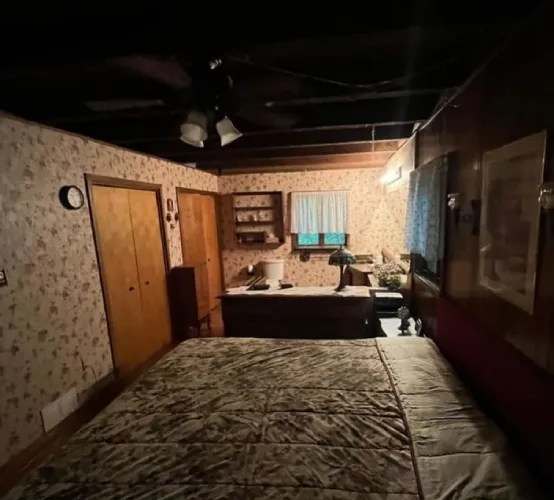
- Takeaway: Natural light is your best friend. Open the blinds, switch on a few lamps and shoot when the sun’s working in your favor – not against you. If it still looks gloomy, bump up your exposure settings or bring in a small light source to lift the mood.
3. Flash glare
If you can see that bright spot bouncing off the fridge or mirror – the buyer can too. In fact, it’s probably all a buyer will see. Bright flashes or harsh reflections of light can wash out color and flatten everything in its path, no matter how nice the space actually is.
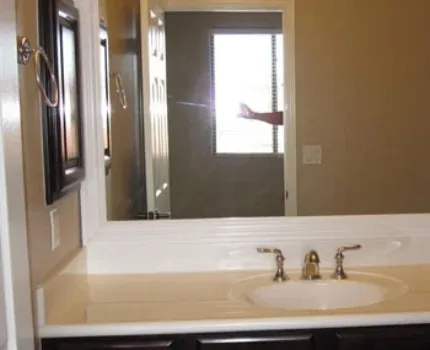
- Takeaway: Skip the direct flash whenever you can. Let natural light do the work or use HDR mode to even things out. A simple angle change or light repositioning can also stop reflections before they start.
Related article

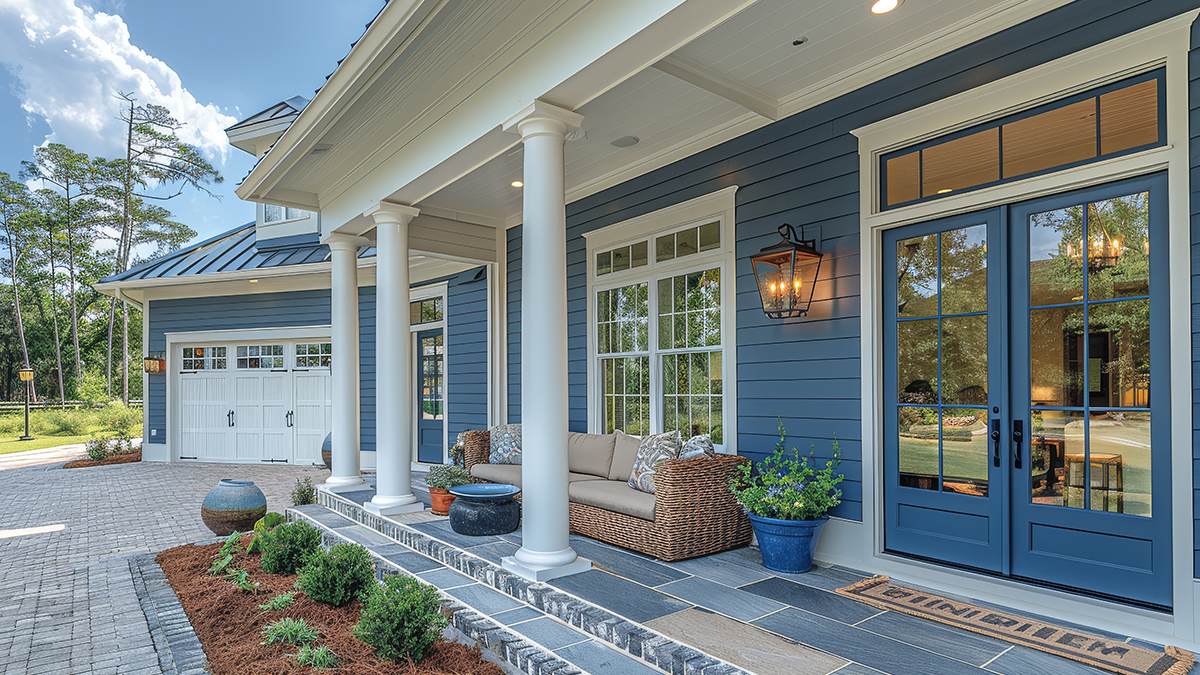
30 inspiring curb appeal ideas to make a lasting first impression
4. Photobombing pets
Sure, your client’s pets may be adorable, but the buyers don’t need to see them lounging on the bed or running across the room. They came to see the house, not their furry occupants. Featuring photobombers in photos instantly pulls the focus away from the home itself and makes the space feel less neutral.
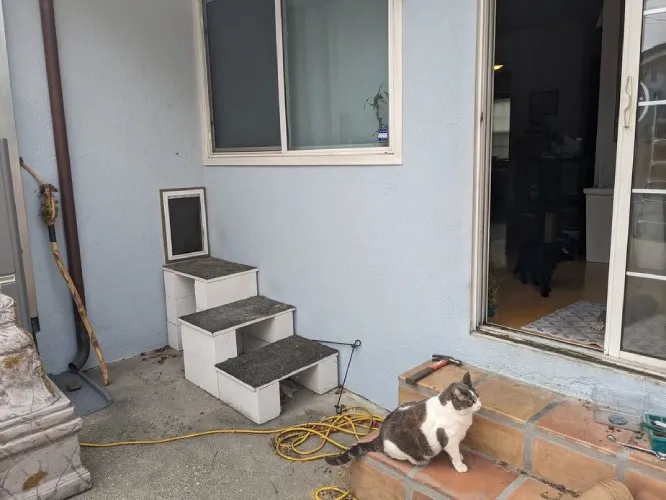
- Takeaway: Give yourself a clean slate. Ask everyone – including those furry housemates – to step out for five minutes. The goal is to help buyers imagine their lives in the house, not to imagine someone else’s life.
5. Messy spaces
A kitchen covered in mail, a bathroom with toiletries on the counter or an entryway with shoes by the door doesn’t exactly say “move-in ready.” Cluttered photographs are often worse than they look in person and distract buyers from actually seeing the home.
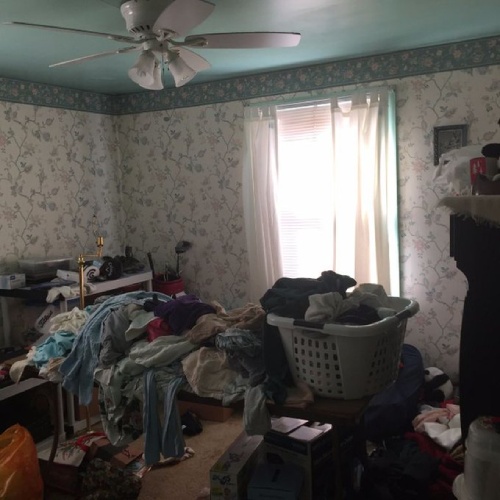
- Takeaway: Before you shoot, take five minutes to clear every surface. Less stuff equals more visual space, and that’s what sells. Better yet, put it on your seller’s pre-listing photo checklist and have them clean up their own mess.
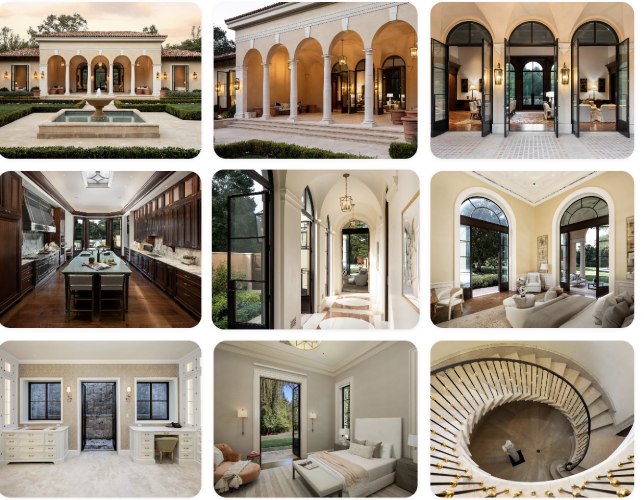
If clearing a room isn’t an option, Trolto can help. The platform offers virtual decluttering, furniture removal and even short marketing videos that show a space in its best light. It’s a great solution when a home can’t be fully staged but still needs to look organized and move-in ready. Try it on your next cluttered listing and you’ll be surprised by how much difference a clean visual can make.
Visit Trolto6. Unbalanced lighting
Good lighting can make a room shine, but too much of it can ruin the shot. Have you ever taken a photo where the window’s glowing like a UFO while the rest of the room disappears into the shadows? That’s unbalanced lighting. It throws off depth and makes the photo hard to look at and see the space for what it actually is.
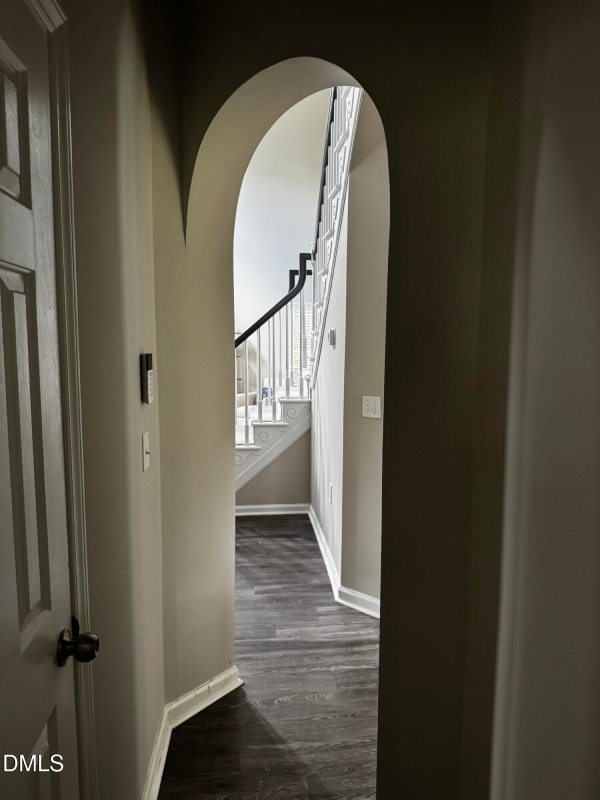
- Takeaway: Even out your light. Let in some daylight, but don’t let it overpower everything else. Use HDR or edit lightly to balance bright spots and shadows so the room looks natural, not blinding. If the windows have blinds or curtains, adjust them to allow some natural light to shine through. Also, consider your position and what you’re actually trying to capture. There may be a better way to highlight the area just by repositioning yourself.
7. Awkward composition
Nothing feels weirder than a photo that cuts a room in half. When furniture is chopped off or a doorway is missing its frame, the whole space looks smaller and disjointed. It’s the visual equivalent of a sentence that ends mid-thought.
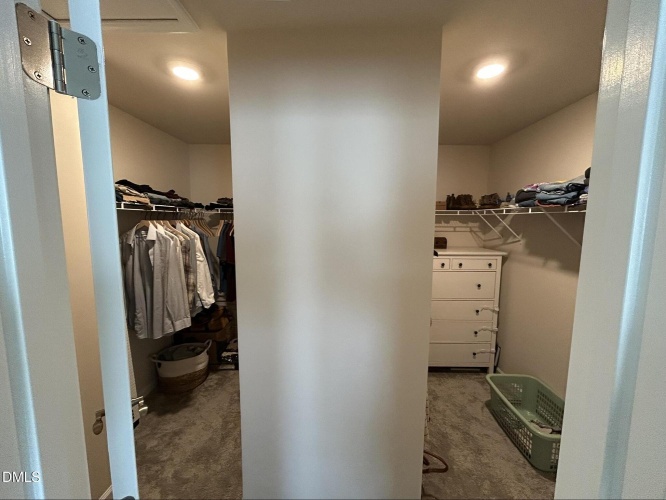
- Takeaway: Take a step back and look at your framing before you take the picture. Try to capture full walls and corners so buyers can actually understand how the space flows from one side to the other. If you can’t make an angle work, it may be better to just leave the picture out.
8. Weird angles
Unless you’re photographing for an art exhibit, no buyer wants to see a room shot from the ceiling or down by the baseboards. Odd angles distort the size of a space and make it impossible to tell what’s what. Real estate photos should be shot from a normal height to capture what a buyer will really see once they enter the home.
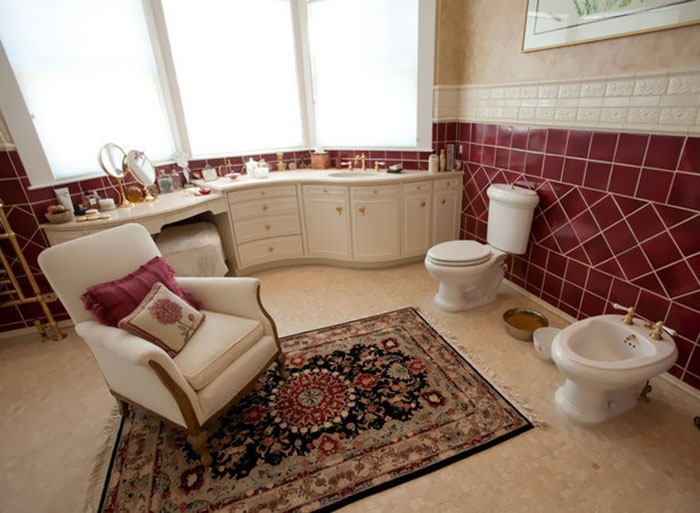
- Takeaway: Keep your camera at chest height and your lens straight. You’ll get cleaner, more natural shots that actually resemble what buyers will see in person.
9. Bathroom blunders
A great bathroom photo can sell a house, but maybe not if the toilet lid’s up or there’s a plunger in the corner. Bathroom spaces are typically smaller and can be more complex to photograph. It’s important to pay attention to the small details. While those details might seem minor, they can send a buyer running to someone else’s listing.
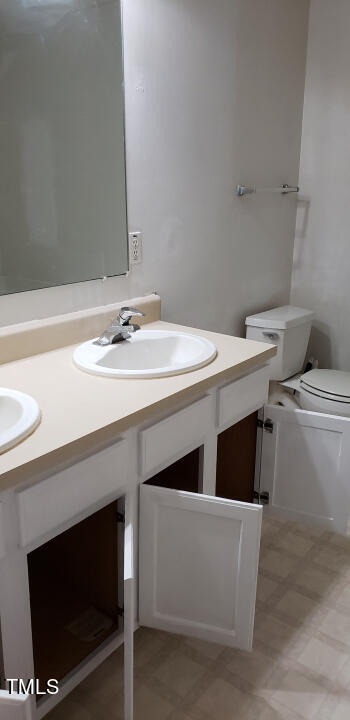
- Takeaway: Do a quick sweep before you start shooting. Close toilet lids, stash products away and straighten up any towels that are hanging or left out. A clean, simple setup makes the bathroom look clean and spa-like.
10. Holiday decor
That Christmas tree might look festive, but it instantly timestamps your listing. A buyer scrolling in May doesn’t want to see stockings on the mantel or an inflatable santa in the yard.
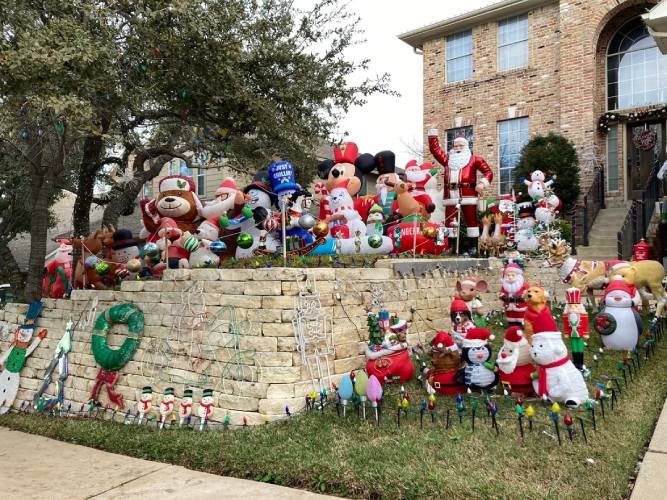
- Takeaway: Keep it neutral. Take seasonal items down before you shoot so the home feels timeless. You can celebrate the holidays – just not in the MLS photos.
11. Bad staging
Whether it’s a real couch or a digital one, bad staging is easy to spot. A giant sectional blocking a doorway or virtual pieces that float midair, all distract from the home instead of helping it shine. Even live staging can backfire when it’s overdone or too specific to the seller’s personal taste.
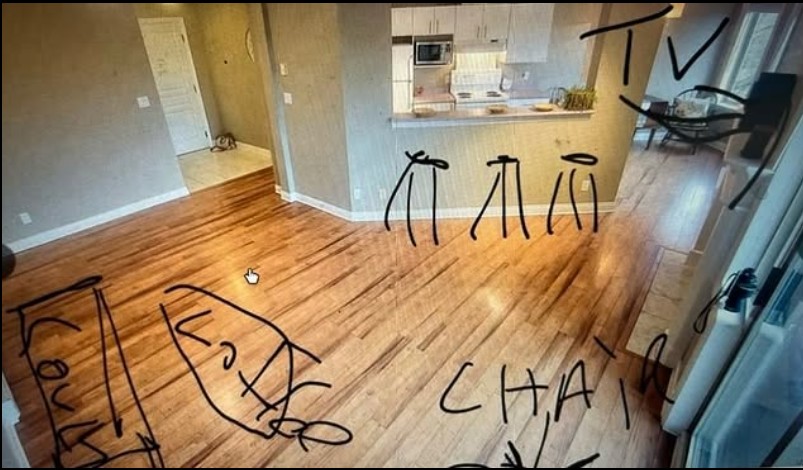
- Takeaway: When it comes to any type of staging, less is always more. Choose furniture that fits in the space and not just a piece of furniture to fill it. If you’re using virtual staging, consider investing in software or a professional who understands the importance of proper lighting and space proportion. The goal is to guide the buyer’s imagination, not confuse it.
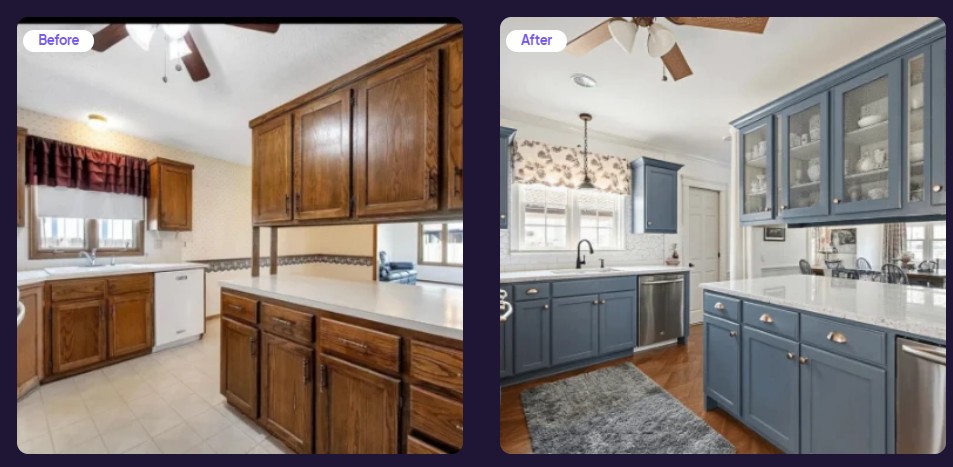
If you haven’t tried it yet, REimagineHome is one of those tools that can actually make virtual staging feel real. You upload a photo, choose a style and within seconds it shows what the room could look like furnished and finished. It’s a great fix when you’re working with a space that needs vision but not a full staging budget. Give it a try the next time you’re stuck on how to help buyers see a room’s potential.
Visit REImagine HomeRelated article
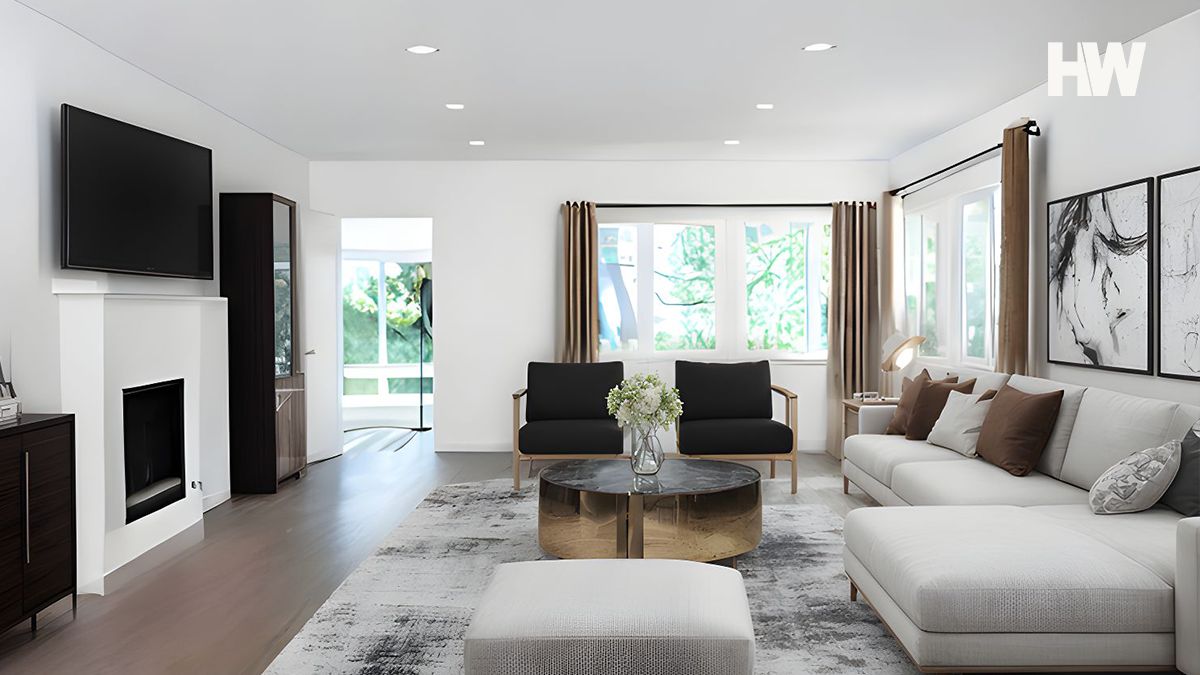
Virtual staging: The best apps for 2025 + mind-blowing AI picks

16 mortgage marketing strategies every loan officer needs in 2025
12. Blurry photos
Blurry photos scream “I didn’t try.” They make buyers question what else about the listing might be neglected. Sometimes it’s a shaky hand, other times it’s an upload gone wrong, but the result is the same. It’s an instant turnoff to anyone scrolling through the listing photos.
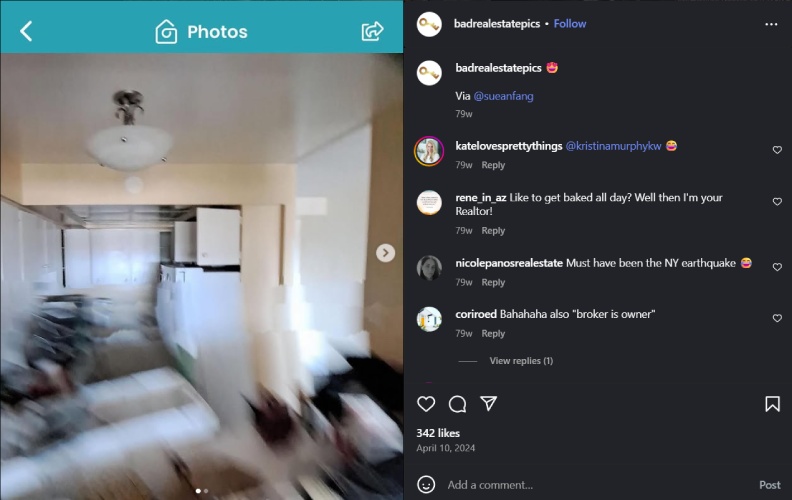
- Takeaway: Use a tripod or a steady surface and check resolution before posting. Photos should be sharp, clear and sized properly for both desktop and mobile viewing. A crisp image says you care about the details. Which is important to any potential seller looking at your prior work when they consider hiring you to sell their home.
13. Poor exterior timing
Nothing kills curb appeal faster than a trash bin in the driveway or a dark, gloomy sky. Even the most charming home loses curb appeal when your photos are shot on the wrong day. Sometimes, it’s the angle that throws everything off. A shot taken from the wrong side can make a great house look awkward.
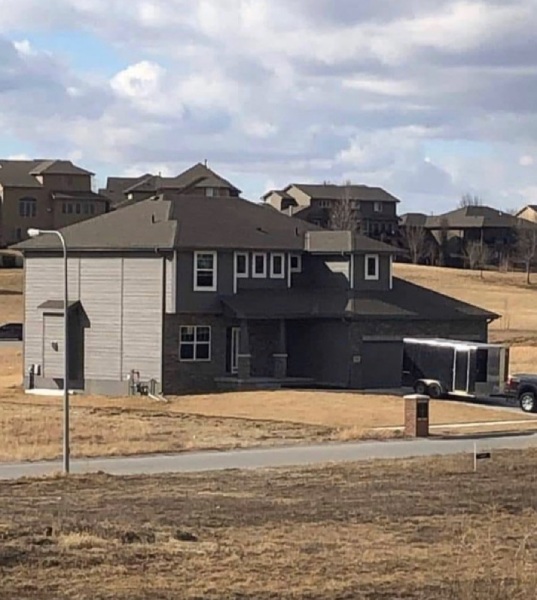
- Takeaway: Wait for a clear day and good light. Move anything distracting out of view and take a few test shots from different angles before deciding which one to use. This picture went viral – and not for the right reasons. If you don’t see it right away, take a closer look.
14. Personal photos
Family portraits, diplomas or personal items that distract a buyer’s attention or that raise eyebrows make it hard for buyers to see themselves in the space. Instead of focusing on the home, they’re focused on the people who live there.
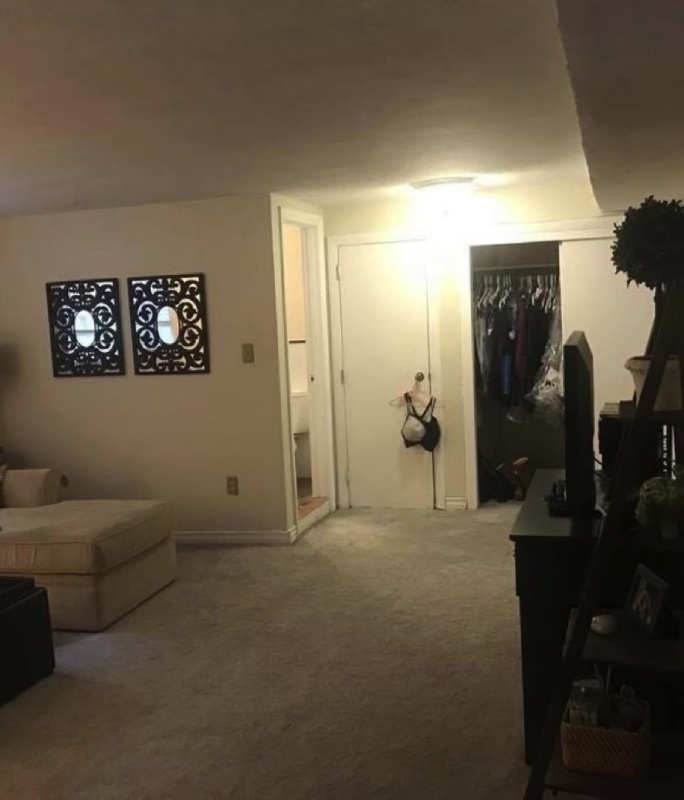
- Takeaway: Take down or put away anything personal or distracting before the photoshoot. Neutral walls and simple decor give your listing that “clean slate” feel buyers can really connect with. Personal items left out will have buyers wondering who the sellers are instead of what it would feel like to live in the home.
15. Over-edited photos
We’ve all seen those listing photos where the grass glows neon green and the sky looks like it belongs in a postcard. It might grab attention online, but buyers know when something’s been overdone. The problem comes when they show up and realize the kitchen counters or paint colors look nothing like the photos—it instantly kills trust.
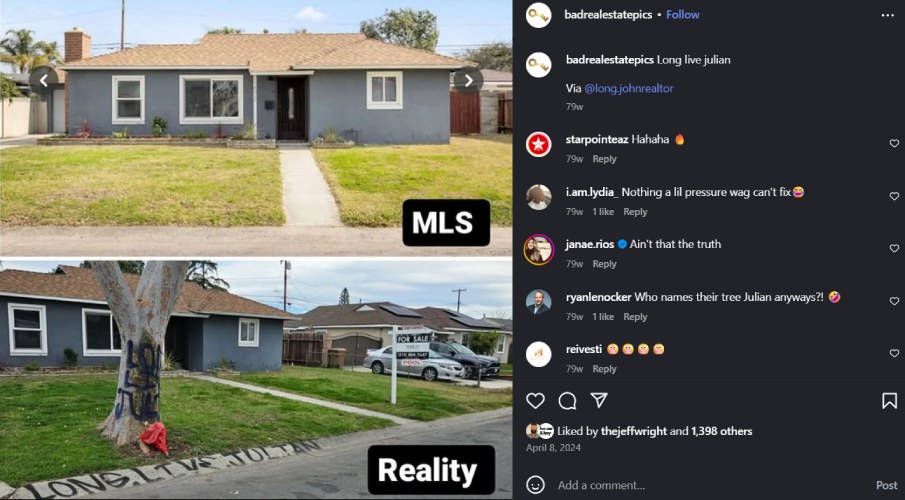
- Takeaway: Edit enough to make the photo clean and bright, but not so much that it feels fake. Fix lighting, not reality. The goal is to make buyers excited to see the home in person—not confused when they get there.
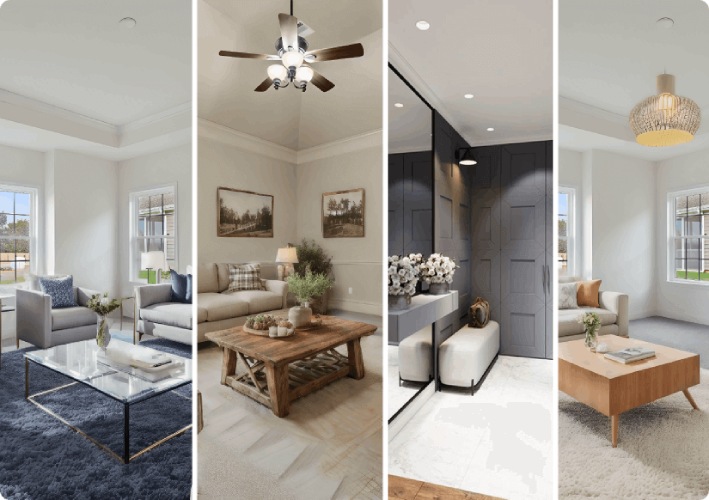
When a space feels flat or hard to visualize, Collov AI will help you bring it to life. The tool uses AI to instantly create interior design ideas based on the room photo you upload—no fancy equipment or editing skills required. It’s especially handy for empty or awkward rooms that need a little personality to spark a buyer’s imagination. Try running one of your trickier listings through it and see how much easier it is to show what the space could be.
Visit Collov AIPro Tip
Not every home needs to look like the cover of a magazine. Some properties need work and that’s okay. Show the home honestly and highlight its potential. The goal is to attract the right buyer, not mislead one.
16. Empty rooms
An empty room might seem clean and simple, but photos of blank walls don’t help buyers figure out what they’re looking at. Without furniture or a point of reference, it’s hard to tell whether it’s a small guest room or a spacious primary suite.
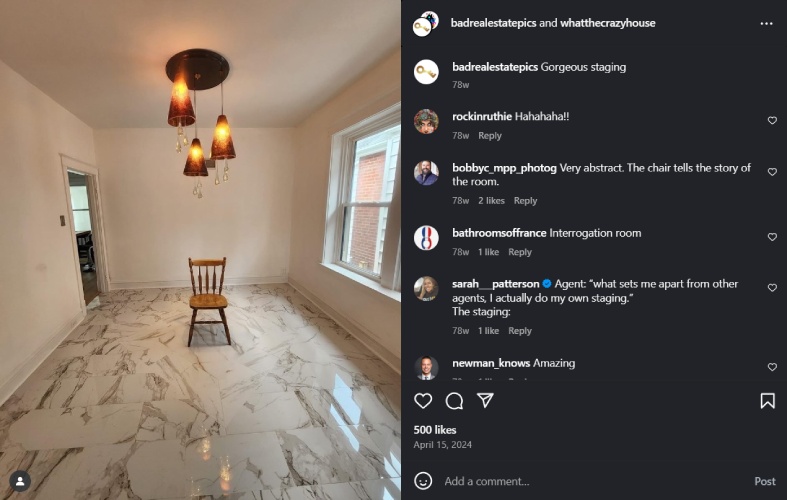
- Takeaway: Add just enough to tell the story. A bed frame, small table or rug gives buyers a sense of scale without cluttering the shot. A little staging helps people imagine how they’d use the space if they actually lived there.
17. Harsh lighting
You can see what’s happening in this kitchen. The sunlight’s pouring in from one side, while the lack of clear lighting on the other side gives everything an orange tint. The mix makes the room feel uneven and more dated than it really may be.
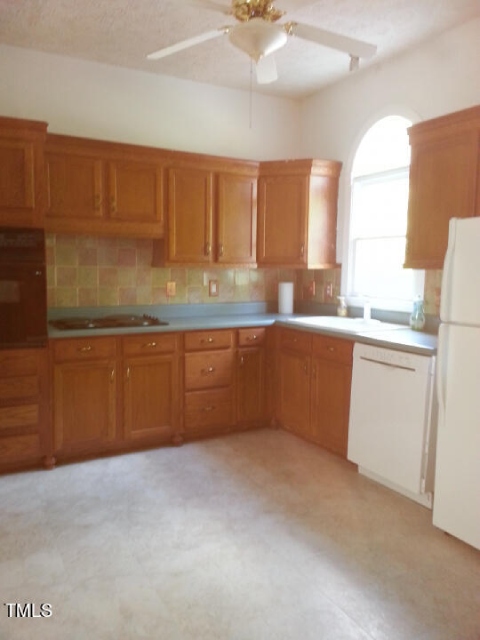
- Takeaway: Stick with one light source. Turn off the overhead lights if you’re using daylight, or close the blinds if you need the lamps to achieve more even lighting. Consistency makes a room feel cleaner and more natural.
18. Random cameos
You know that moment when you’re trying to get the shot and someone accidentally ends up halfway in the frame – like this poor guy holding the door open? It happens more often than you’d think, and it instantly puts a buyer off. Instead of focusing on the home, they’re wondering who’s peeking from behind the door.
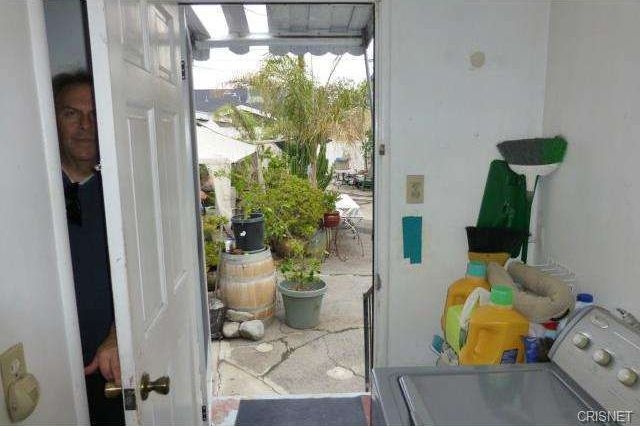
- Takeaway: Before you click, make sure the space is clear of anyone in the shadows. If you have someone helping you photograph the property, have them open the door, step out so you can get your shot and then they can come back. At a minimum, make sure they can be cropped out of the photo later. Buyers should be looking at the property, not playing “Where’s Waldo?” with your listing photos.
19. Wrong focus
We’ve all seen it. You know those photos that zoom in on a countertop, chair leg or a random vintage light fixture with no context as to what the actual space is being used for? It’s like starting a story from the middle, never knowing what happened in the beginning. Buyers aren’t sure what they’re supposed to be looking at, and they definitely can’t tell what the room looks like as a whole. While detailed shots have their place, it’s not what you’re actually trying to sell.
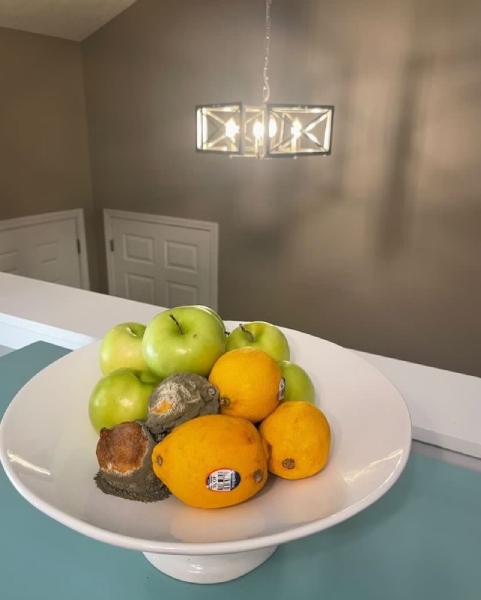
- Takeaway: Start wide to show the entire space, then capture details that add meaning like a sleek backsplash, statement lighting or original trim. The flow of the room sells the home – the close-up details just help tell its story and display craftsmanship.
20. Unintentional reflections
You know that moment when you’re ducking under a mirror or sidestepping a shiny fridge door only to spot the top of your head in the final shot? I’ve been there and done that. Reflections sneak up fast, and once you see them, you can’t unsee them. They pull attention away from the space and make even a great photo feel rushed or awkward.
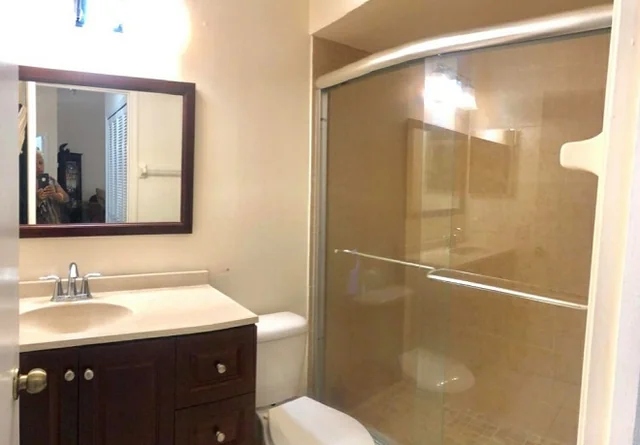
- Takeaway: Before you shoot, take a quick look around for anything reflective, including mirrors, windows, glass doors or screens. Adjust your angle, crouch a little lower or use a timer so you can disappear completely. The goal is to help buyers imagine themselves in the room, not catch a glimpse of you trying to avoid the mirror.
What bad photos cost you and when to hire help
Bad real estate photos don’t just make a listing look careless. They can cost you serious time and money. Buyers form opinions in seconds, and if your photos don’t catch their attention, they move on to the next property. When buyers stop scrolling, they start scheduling showings—and that’s what great photography does. Let’s take a second to look at a few key stats to help us understand why this is important.
- According to the National Association of Realtors, all home buyers use the internet to search for a home. 41% of buyers said photos were the most valuable feature on a listing website.
- On average, property listings featuring high-dynamic-range (HDR) imagery sell 50% faster and increase online views by 118%.
If taking photos isn’t your strong suit or you simply don’t have the time, it’s worth bringing in help. Most professional photographers charge somewhere between $150 and $300 per listing, depending on where you are and what’s included. What you get in return are photos that are bright and consistent. They make buyers want to stop scrolling and start imagining.
For special properties, a few extras like drone shots or twilight photos can be worth the investment. Whether you shoot them yourself or hire it out, remember that your photos are the home’s first impression. So, make it a good one.
Related article
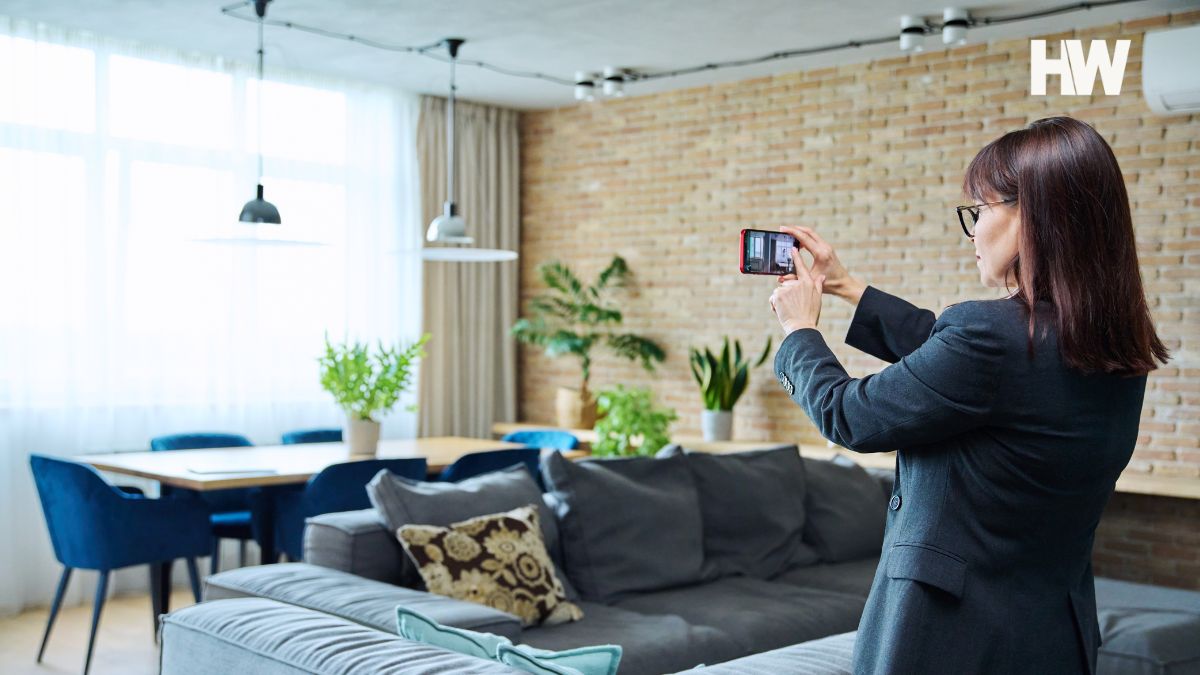
11 DIY real estate photography tips every agent should know
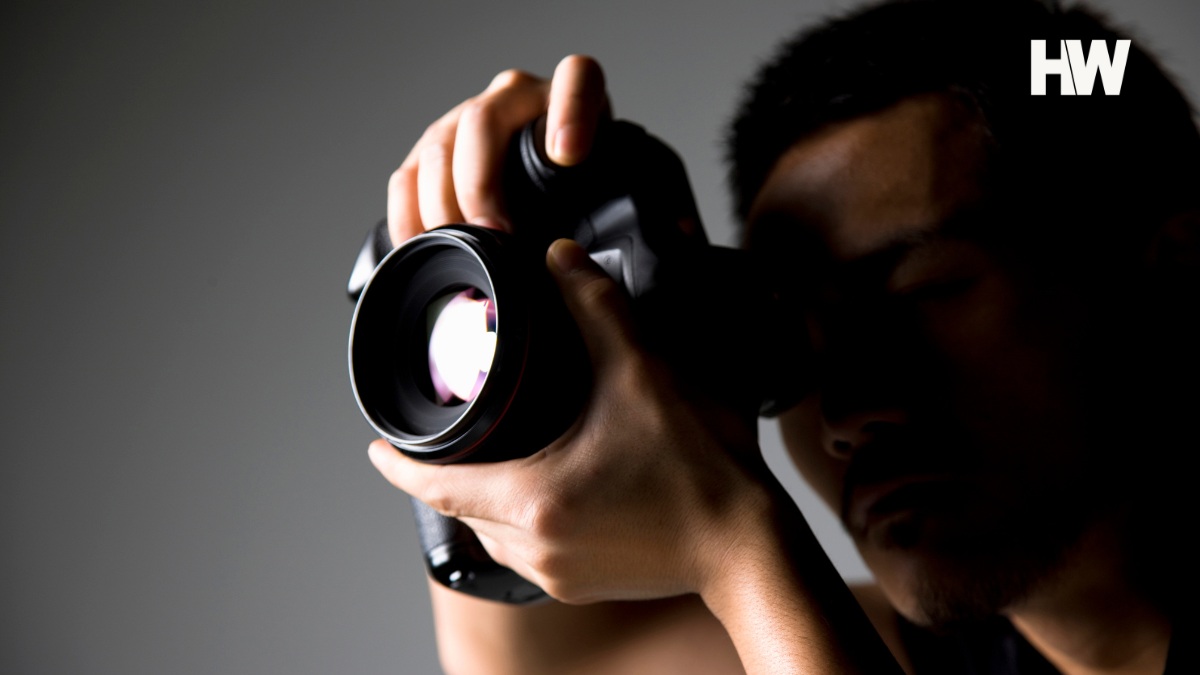
An agent’s guide to hiring a real estate photographer
The full picture: Bad real estate photos
Bad real estate photos can happen to anyone. Maybe you were racing against daylight, maybe the house wasn’t quite ready or maybe you just didn’t notice that reflection in the mirror until you got back home. The good news? Every one of those mistakes can be fixed, and the lessons they teach can make your next shoot that much better.
At the end of the day, great listing photos aren’t about perfection. They’re about finding ways to attract the right buyer and entice them to schedule a showing. Buyers click on images that feel bright, balanced and real. So whether you’re behind the camera or working with a pro, take the extra few minutes to frame, light and edit with intention. Your listings will stand out, your sellers will thank you and your next batch of photos will be the kind you don’t regret taking.
Real estate advice + top tech, lead gen & marketing tools — delivered to your inbox.
Get expert advice, independent reviews and product recommendations from our editorial team of experienced real estate agents, brokers and coaches.
Read More
By: Gina Baker
Title: 20 bad real estate photos agents regret taking (+ how to fix them)
Sourced From: www.housingwire.com/articles/bad-real-estate-photos/
Published Date: Thu, 30 Oct 2025 15:43:08 +0000
Share This
Latest Posts
WHAT COULD GO WRONG? Eric Swalwell Wants Americans to be Able to Vote by Phone (VIDEO)
Government unveils major AI investment package to drive UK growth and create thousands of jobs
Jesse Kelly Blasts Gavin Newsom, Warns of His Influence – “Gavin Newsom, as Much as I Despise Him, is a Very Capable Politician” (VIDEO)
Categories
- Business (3642)
- Finance (1442)
- Real Estate (3269)
- Politcal (3747)
- Technology (3647)
.png)


